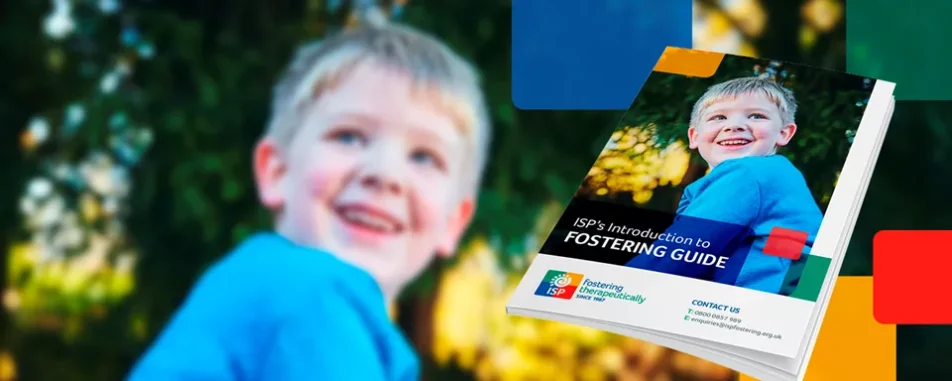Lucy and her husband, Dan, have recently fostered a transgender teenager who prefers to be known as she/her.
Lucy describes the journey they’ve been on with the young person in their care, from her not leaving her bedroom for two months to eventually venturing out into the world and attending college.
In this video, she talks about the young person’s exploration of her gender identity and how she supported her throughout this journey.
Coming into foster care is a significant transition for any child. This was especially true for the young person in Lucy and Dan’s care. Lucy explains, ’She had quite bad anxiety when she first joined us… She went straight up to her room, and there she stayed for about two months before coming out.’
Lucy says that it was through her and Dan’s perseverance that they managed to build a relationship with the young person in their care, ’The longer it went on, I think the harder it was because you’ve got this person in your house that you’re trying to get to know and it just wasn’t going anywhere but we kept picking and eventually we got there, and now she’s all out in the world going to college and everything.’
When the couple welcomed the young person into their home, Lucy explains that they referred to her as he/him, ‘That was what she was assigned at birth, that was what she’d always had, so until she told us that it was going to be different, that’s what we went with.’
Over time, and through Lucy and Dan’s caring approach, their young person was comfortable enough to explore her identity. Lucy says, ’It started with being non-binary, and as she explored it more was like, ’I would like to wear dresses… Rather than trousers’ and ended up with skirts, fluffy jackets and everything, and yeah, she was like ‘I actually feel more comfortable with she/her rather than he/him’.’
On their young person’s one-year anniversary of being in their care, Lucy created something special for her, ‘We did a photo book for her year anniversary with us. I did it in timeline order, so the first pictures are when she started coming out of her room and sitting in the garden to where she is now. You could really see that change within herself, seeing the confidence in trying new hairstyles and different dresses.”
Lucy describes the joy of seeing ‘the sparkle’ return in her eyes and when ‘they stand that bit taller’. She says the photo book is a ‘visual for them so they can look back and see how far they’ve come.’
Approaching gender identity
The NSPCC describes Gender Identity as ‘how a person feels about their gender.’
Sometimes, people feel a disparity between the gender they believe they should be and their biological sex; this sense of unease is called Gender Dysphoria. The NSPCC explains that although Gender Dysphoria is not a mental health condition, it can lead to depression and anxiety.
Someone who has Gender Dysphoria may decide to change the way they look and, like the young person in Lucy’s care, choose to wear different clothes to explore their feelings about being another gender. The NSPCC explains that puberty can be a challenging time for young people questioning their gender, as the changes to their body can exacerbate feelings of being disconnected from the gender they have been assigned.

Tips for approaching Gender Identity
Whether or not the child or young person in your care is showing signs of gender dysphoria, here are some tips to help you approach gender identity sensitively so the child or young person in your care can flourish.
Be mindful of the language and opinions you share in your home
The children or young people in your care may be questioning their gender identity but don’t feel ready to open up about it. If they hear negative opinions or derogatory language towards gender diversity, they may feel unable to open up to you in the future.
Impressionable children and young people may absorb and believe negative attitudes, which could lead to bullying and a lack of acceptance or respect for peers who are experiencing gender dysphoria.
Focus on building a trusting relationship with your young person
Approach gender identity therapeutically; by using methods such as PACE to foster a therapeutic relationship with the child in your care, you’ll build the foundation for them to open up about their gender identity if and when they decide to.
Respect pronouns
As Lucy and Dan have done, respect the pronouns the child or young person in your care prefers. By respecting their pronouns, you are validating their feelings and their identity. Gender identity is a crucial part of what makes a person who they are, and when others don’t respect pronouns, it can have a profound impact on the child or young person’s mental well-being and self-esteem.
Seek support
ISP is here for you and the child in your care 24/7, including access to therapists who can support your child or young person on their gender identity journey.
Be open and willing to learn if you don’t understand
Below are some helpful links that can assist you in further understanding gender diversity. They also provide practical advice on supporting the gender identity journey of the child in your care
